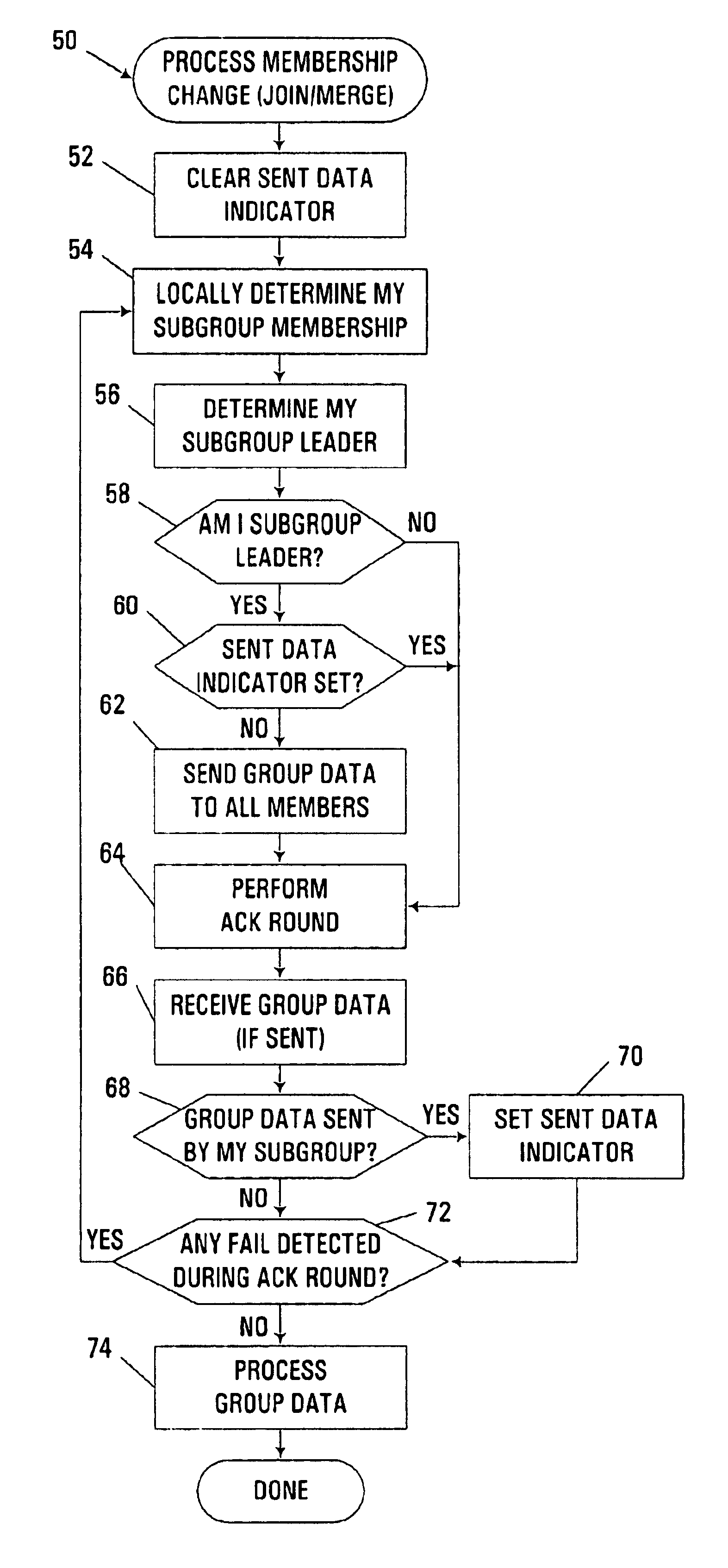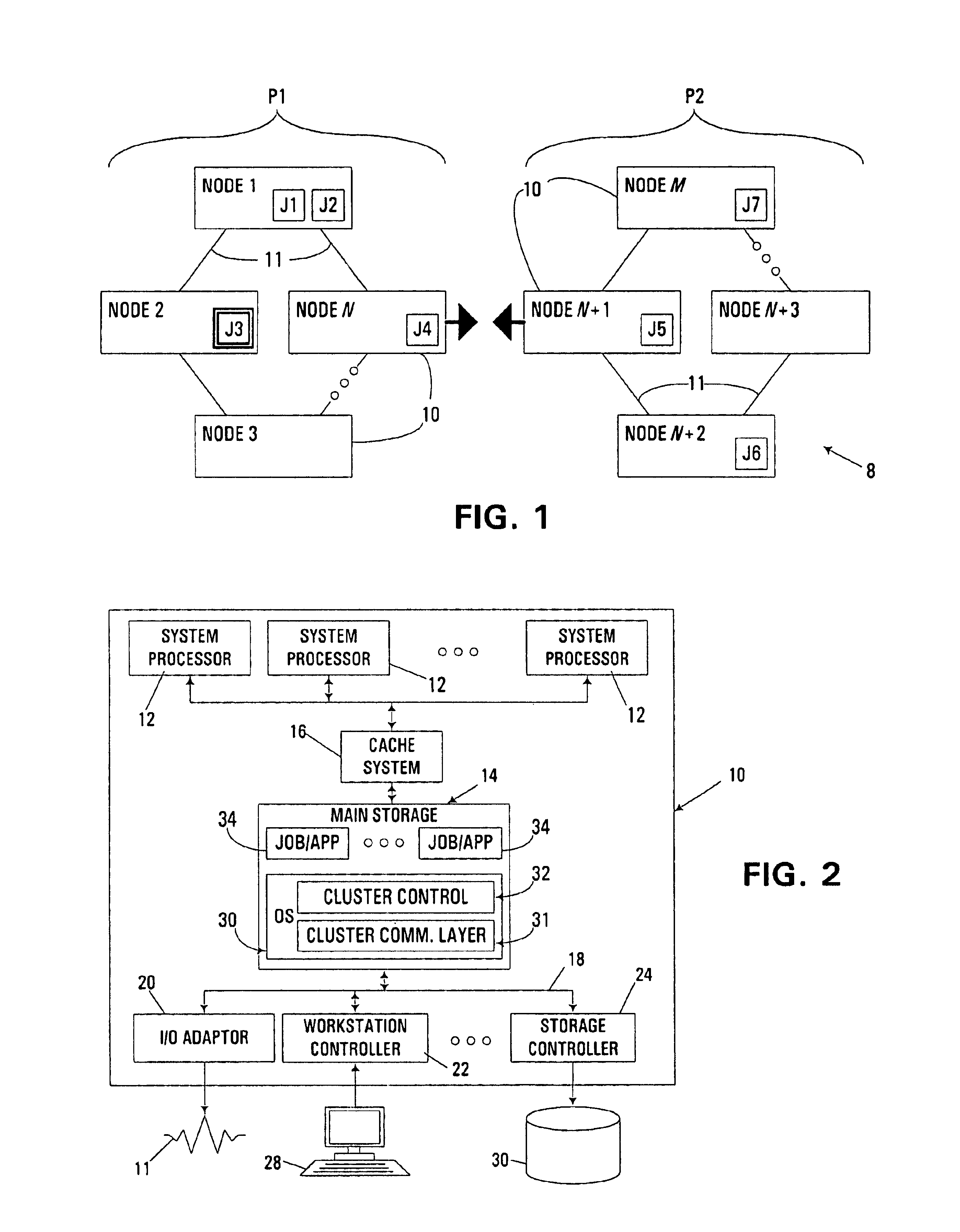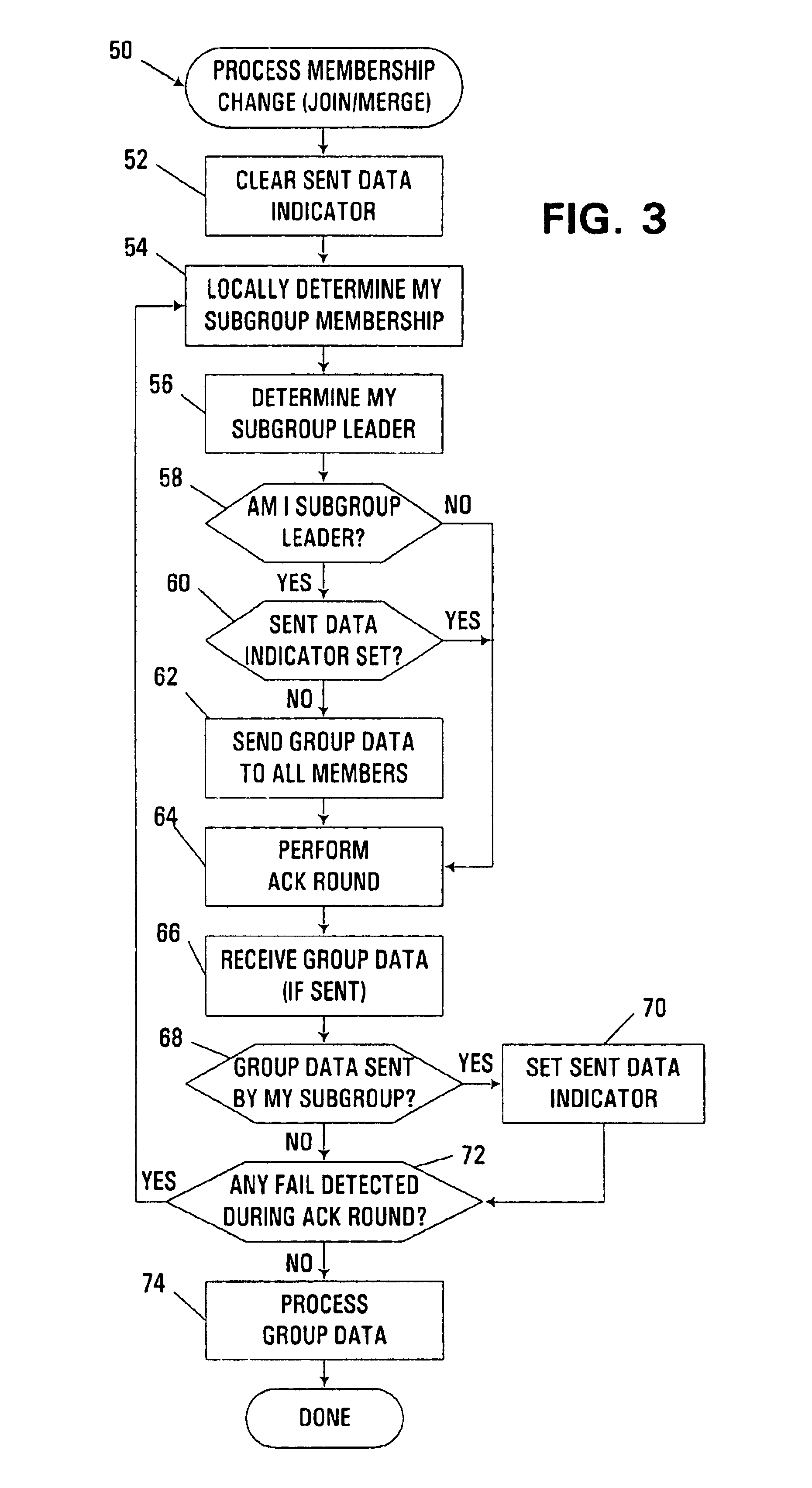Group data sharing during membership change in clustered computer system
a computer system and data group technology, applied in data switching networks, frequency-division multiplexes, instruments, etc., can solve problems such as system errors, broadcast approaches that require substantial message traffic, and compromise data integrity
- Summary
- Abstract
- Description
- Claims
- Application Information
AI Technical Summary
Benefits of technology
Problems solved by technology
Method used
Image
Examples
Embodiment Construction
The embodiments described hereinafter utilize subgroup leaders and localized monitoring functionality to ensure efficient and reliable sharing of group data during processing of a request to organize multiple members into a new or existing group in a clustered computer environment. Group data sharing consistent with the invention may be utilized in connection with a number of different group organization operations, e.g., various membership change protocols such as merging multiple partitions of a cluster group logically resident in one or more nodes of a clustered computer system, or joining one or more new members to an existing cluster group.
A subgroup in this context refers to a subset of members from a group for which it is known the group data therefor is coherent among all group members. Thus, for a merge, each partition is considered to be a subgroup, while for a join, the existing members of a group are considered to be one subgroup, while the member or members being added ...
PUM
 Login to View More
Login to View More Abstract
Description
Claims
Application Information
 Login to View More
Login to View More - R&D
- Intellectual Property
- Life Sciences
- Materials
- Tech Scout
- Unparalleled Data Quality
- Higher Quality Content
- 60% Fewer Hallucinations
Browse by: Latest US Patents, China's latest patents, Technical Efficacy Thesaurus, Application Domain, Technology Topic, Popular Technical Reports.
© 2025 PatSnap. All rights reserved.Legal|Privacy policy|Modern Slavery Act Transparency Statement|Sitemap|About US| Contact US: help@patsnap.com



